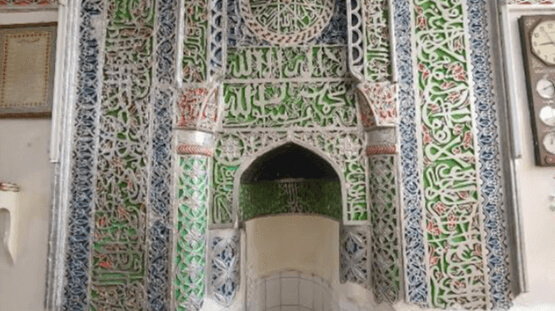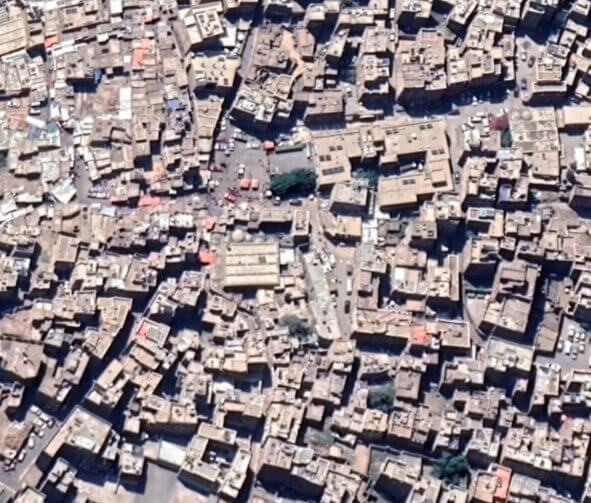
Maḥmūd Mosque – Old Ṣan‘ā’
مسجد محمود – صنعاء القديم ة
Monument description
We did not find any other information in the historical sources about this Mosque, and who built it or ordered its construction or about any additional works or restoration and other information, except what Al-Hajri mentioned in his book (Sana‘a’ Mosques). He mentioned what the Commander of the Faithful, the Trustee in God, Yahya bin Imam Al-Mansour had done. By God, Muhammad bin Yahya Hamid al-Din, who purchased the house that was located in the lower part of the square for the purpose of expanding it, and that he dug the well until the water increased in it. Al-Hajri also mentioned that (improved) way for drinking was made in the cow market from the work of Ahmed Al-Suraihi “in the present era,” and another way to the east of the Mosque.

Architectural and cultural value
Built date: The date of establishment before the 10th century AH.
Building style: The layout of the Mosque is in the style of mosques, which consist of a Prayer Hall with a flat roof supported by wooden beams resting directly on the capitals of stone columns and arches.
Components of the Mosque: Prayer Hall, small Minaret, Al-Manzilah, Berkah, Ablution Unit, Sabil and traditional baths.
- Justifications for intervention:
- 1. Neglecting the competent authorities in carrying out periodic restoration work due to the lack of budgets for the repairs
2. Preserving the monument from disappearance and stopping the damage caused to the monument from expanding
3. Restoration of the damage to the Mosque resulting from the flight strikes of the southern part of the Old City of Sana‘a
4. Contribute to the restoration of damaged monuments in a proper manner in order to keep Old Sana‘a In the World Heritage List.
- Monument conditions:
- Damages resulting from the old building and time factors, from wrong repairs, from previous poor restoration, and damages resulting from water leakage into the Mosque. These damages include:
1. Cracking of Qadad in the water pool surfaces
2. Cracks on the roof of the Prayer Hall
3. Moisture and salinity in the foundations
4. Collapse of some parts of the stone walls of the settlements and the northern gate of the pond - Treatments:
- – Restoration and re-layer of Qudad in the affected places. Re-dressing and making a coast to drain rainwater on the northern facade
– Reconstruct the dilapidated wall.
– Stop longitudinal cracks
– Treating damaged foundations and solving the problem of moisture
– Treating roofs and preventing rainwater intrusion.

Countries






